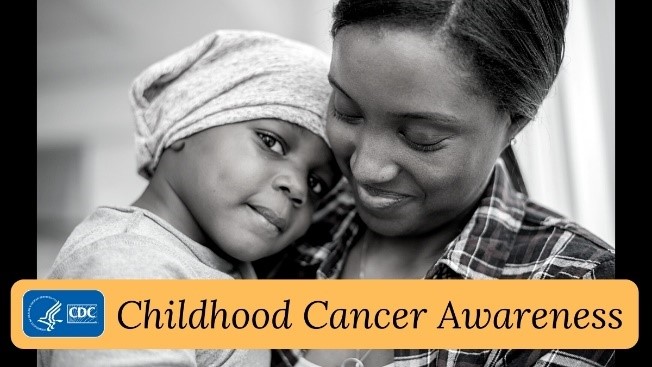Childhood Cancer Awareness Month
Posted on bySeptember is Childhood Cancer Awareness Month. While approximately 15,000 children ages 0-19 are diagnosed with cancer each year, the cause of most pediatric cancers remains unknown.
CDC’s National Center for Environmental Health and Agency for Toxic Substances and Disease Registry (CDC/ATSDR) are working to increase our knowledge about and ability to prevent pediatric cancers in several ways.
The National Environmental Public Health Tracking Program provides information and data regarding health issues, like cancer, that may have known or suggested links to environmental exposures. The Tracking Program provides this information through the Environmental Public Health Tracking Network (Tracking Network), a Web-based system of data, tools, and services.
The Tracking Network hosts data on several types of childhood cancers including leukemia, acute lymphocytic leukemia, acute myeloid leukemia, and brain and central nervous system cancers.
You can use Tracking’s Data Explorer to view these state-level cancer data in interactive maps, tables, and charts. The data can be sorted by gender and race/ethnicity and are available for multiple years. This helps form a more complete picture of where cancer cases are occurring, which population groups are most affected, and how things change over time.
The Tracking Program also supports skin cancer prevention efforts, including those focused on children, through development of the Melanoma Dashboard in partnership with CDC’s Division of Cancer Prevention and Control. The dashboard provides a wide range of state and local data which can be used to help communities address their unique melanoma prevention needs. It includes state policy data on minors’ access to indoor tanning devices and sunscreen use at schools—important information communities can use to plan and customize local prevention activities.
CDC/ATSDR is also supporting states that are investigating community concerns about elevated cancer rates through the effort to update the 2013 guidelines, “Investigating Suspected Cancer Clusters and Responding to Community Concerns.”
Sometimes people in a community have more cases of cancer than would be expected. Environmental concerns are often raised as a possible cause. We are still learning about the relationship between chemical exposures in the environment and cancer, particularly those that may impact pediatric cancers. Determining the cause of any individual’s cancer or a group of cancers can be very difficult.
We are working to update the existing guidelines in accordance with the Trevor’s Law provision within the Frank R. Lautenberg Chemical Safety for the 21st Century Act, so that states can work with communities to better understand cancer patterns in their area and potential reasons for those patterns.
CDC/ATSDR is gathering input from multi-disciplinary subject matter experts, public health partners and members of communities who have been affected by elevated rates of cancers, including pediatric cancers, to ensure that the updated guidelines represent best practices and are as useful as possible for investigators and for communities.



Post a Comment